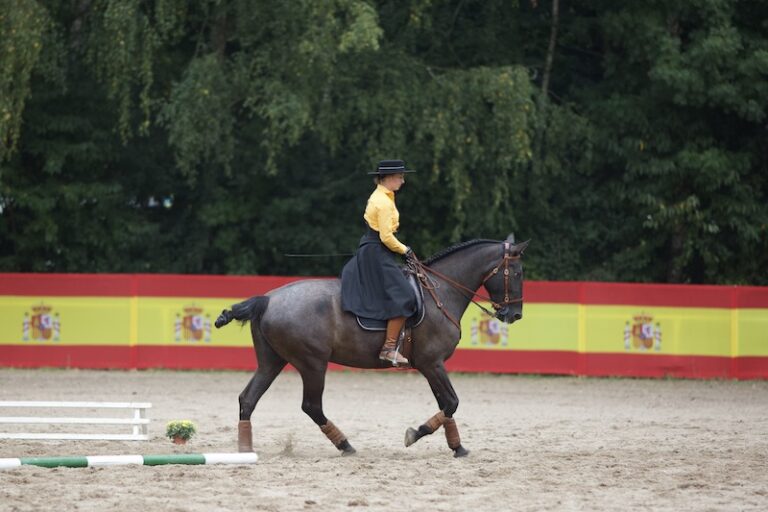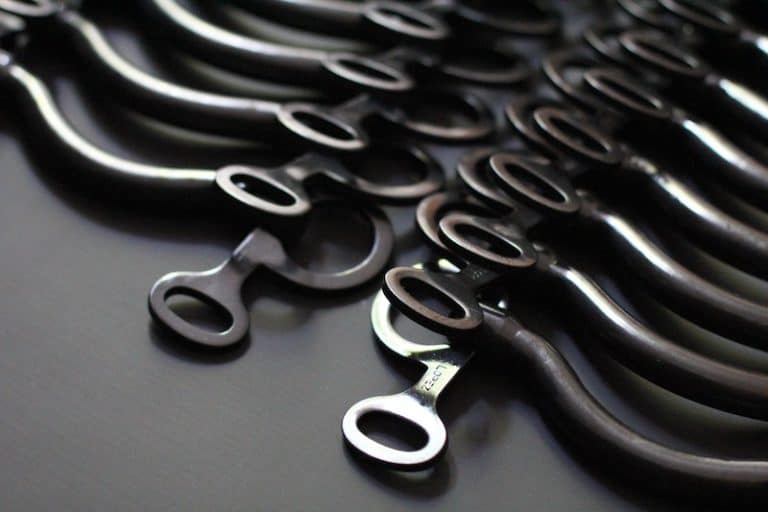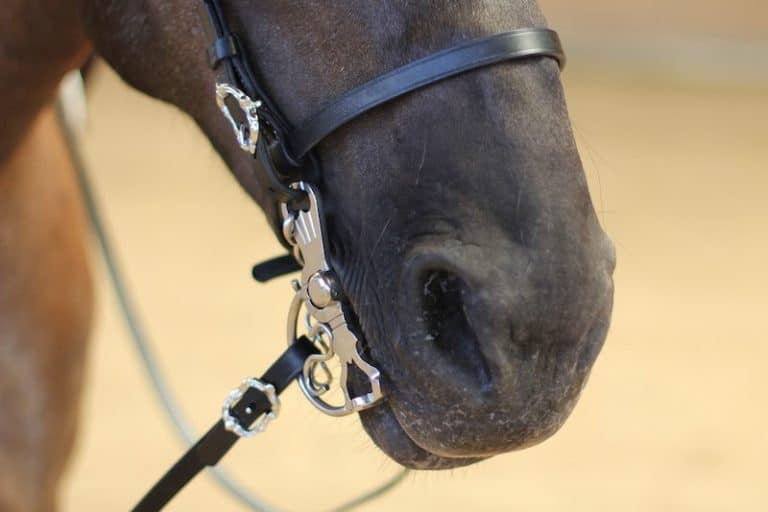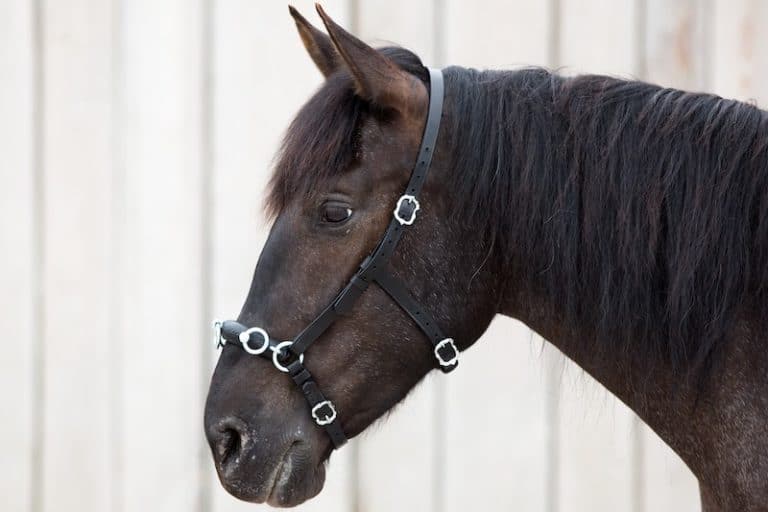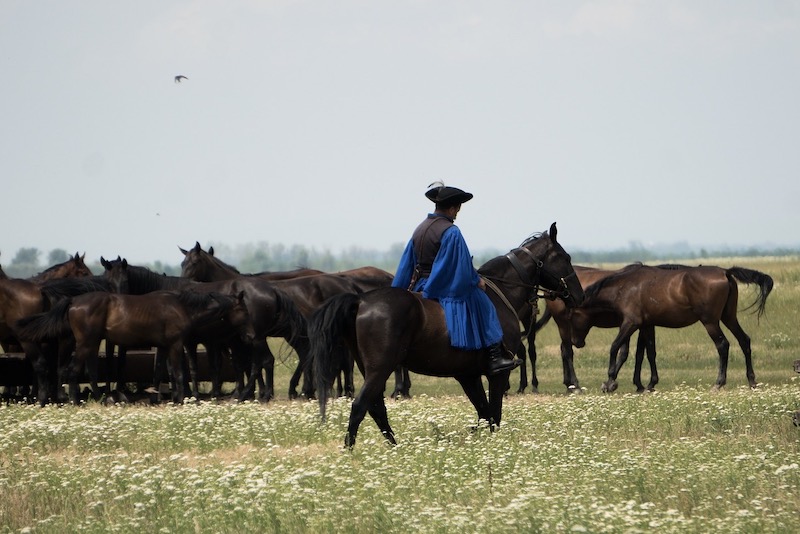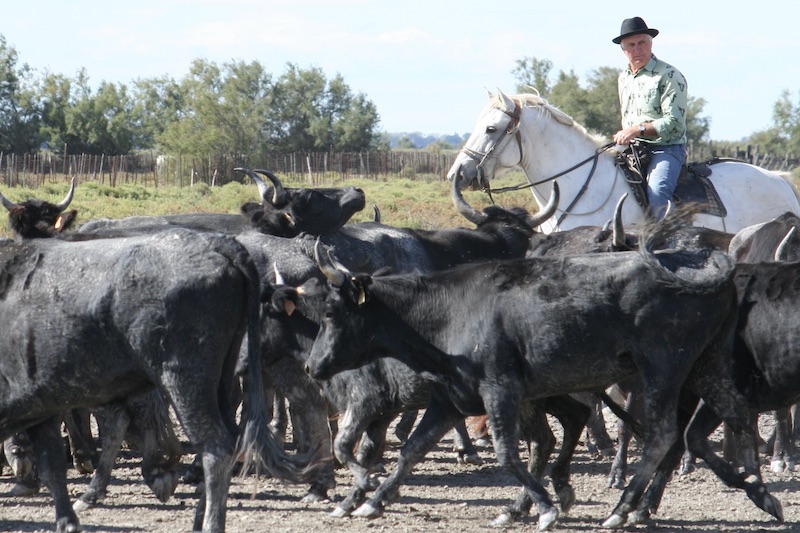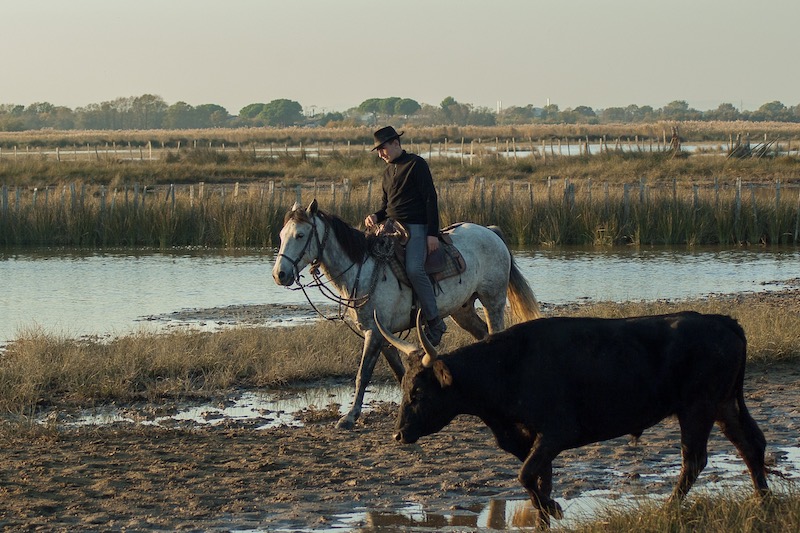Find out more about the newsletter and the voucher conditions here. By registering, you agree to our privacy policy.
The working riding style of the Butteri in the Maremma
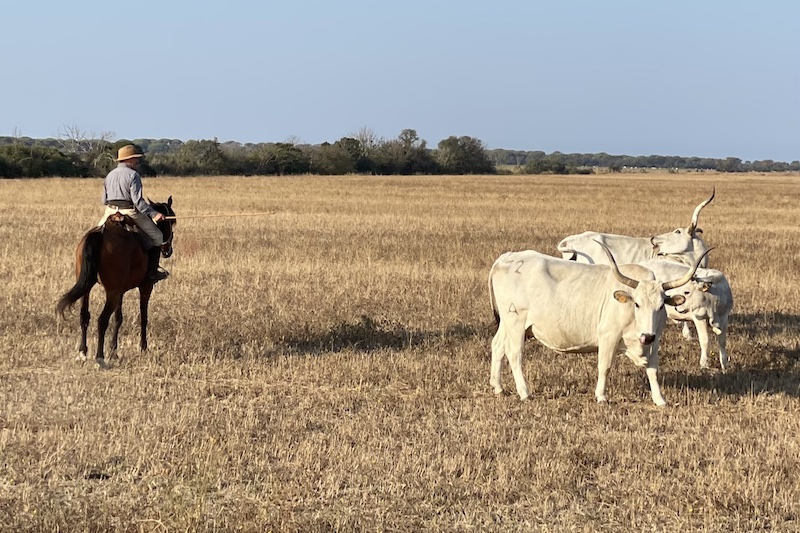
The best-known working riding styles are the Spanish and Portuguese riding styles. There is also the Italian working riding style, which is often a little forgotten, although the Italians were the first to create the discipline of Working Equitation . In this article you can find out more about the Butteri, the Italian cowboys of the Maremma in Tuscany and their riding style, the Monta Maremmana.
- History of the Butteri in the Maremma
- The Maremma horses
- Monta Maremmana - The Butteri way of riding
- The equipment of the Buttero and his Maremmano horse
History of the Butteri in the Maremma
In the 17th century, more and more noblemen from Florence decided to acquire huge estates in the Maremma, a large swampy area in Tuscany. Due to its unbearable climatic conditions, the Maremma was a hostile area, as there was a high risk of malaria in the very hot summer months. As a result, the estates could only be farmed by serfs and agricultural laborers in the autumn and winter months. The swampy area was mainly covered with maquis shrubs and large forests of pine trees. As normal agriculture could not be established due to the conditions, cattle breeding gradually became established in the Maremma. The large herds of cattle lived almost wild in the vast marshland, so the use of a mounted cattle herder was recommended. This is how the work and riding style of the butteri came about. Their task was to herd the large herds of Maremma cattle. The buttero's loyal supporter was the Maremmano horse. The buttero used it to drive the herd from one pasture to the next, catch animals that had been torn out or select young animals. Deworming and vaccinating, as well as driving the calves to the "marca" - the burning - once a year were also part of his job. Sick or injured animals were treated by the buttero. Long days in the saddle in all weathers were required to fulfill all these tasks. The diet was meagre, and malaria and tuberculosis were constant companions. Some people joked that you had to force a buttero to get off his horse to eat and drink. Despite the very hard and poorly paid work, the Butteri were proud of their profession. Similar to the Gardians in the Camargue, they were a very close-knit community. Knowledge was often passed on from father to son.
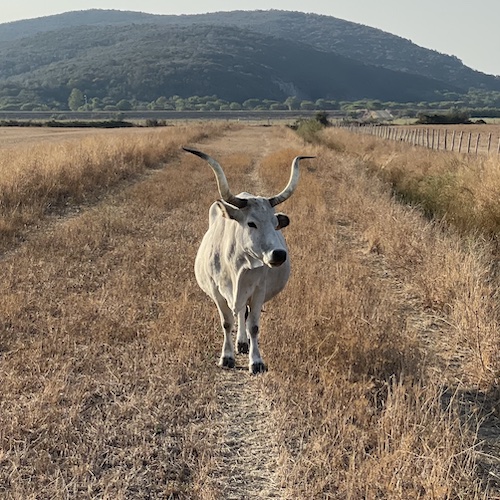
In 1920, Mussolini successfully had a large part of the Pontine marshland in the Maremma drained. His aim was to curb the ongoing malaria outbreaks and to be able to use the area for agriculture. After a large part of the marshland was drained and the number of cultivated areas increased, the demand for butteri fell sharply. The herds of cattle became much smaller. Tractors, not Italian cowboys, were needed to cultivate the land.
When the Maremma National Park was re-established by the Italian government in 1975, south of Grosseto, with an area of over 200,000 hectares and several estates, the butteri once again had a task. Today there are still around 1,000 butteri. As well as looking after the herds of cattle, they also look after the herds of Maremmano horses and tourists who come to the estates. They organize traditional equestrian games in which the agility and speed of their Maremmano horses is demonstrated. If you are saddle fit, you can go for a ride with the Butteri through the vast Maremma or help herd and select the herds of cattle to horses.
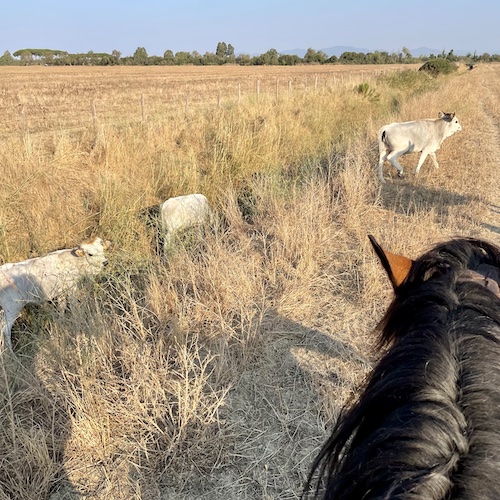
In 1890, Colonel William Cody, also known as Buffalo Bill, came to Rome with his Wild West Show. He and his troupe described themselves as the best and most daring riders. When the Butteri heard about this, they and Duke Castani di Sermoneta felt challenged to take part in the show as well. The Duke challenged Buffalo Bill and his cowboys to capture, tame and ride one of the wild Italian young horses. In return, the Butteri were to capture and ride one of Buffalo Bill's horses. According to reports, the Butteri tamed Buffalo Bill's horse faster than the Americans tamed the Italian horse. At least that's how the Butteri still proudly tell the story today.
The Maremma horses
The Maremmano is a very old Italian horse breed whose origins date back to the Etruscan era. To this day, the Maremmano horse is mainly used as a shepherd horse. It is the loyal supporter of the buttero in his work. Its conformation resembles that of a typical working horse: compact with sturdy legs and a height of between 155-170 cm. His character is very balanced and friendly. He is characterized above all by his robustness, stamina and sure-footedness. It is known for being able to cope with any weather and any type of ground. This makes the Maremmano ideal for long trail rides. The coat color of the Maremmano horse is usually brown or black. They usually have no markings, or only very small ones. Like almost all horse breeds used for work riding, the Maremmano also has the famous seventh sense for cattle work, the so-called cow sense. This enables him to support his riders ideally in cattle work. Incidentally, the Italian police use numerous Maremmano horses as service horses for their mounted carabinieri.
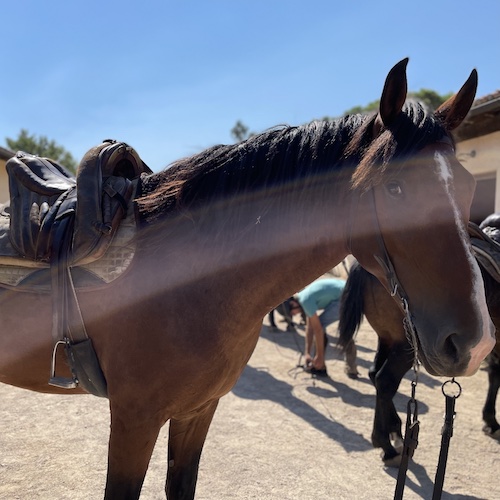
Monta Maremmana - The Butteri way of riding
The Butteri's working riding style in the Maremma is characterized above all by its simplicity. It has adapted to the purpose of herding cattle. The rider is trained practically directly in the saddle. As with all working riding styles, the buttero also rides one-handed, holding the wooden unico or sisal lasso in his free hand. Unlike most working riding styles, the horses trot lightly, gallop out or sit lightly. The horses are trained to master flying changes, quick hindquarters turns and stops.
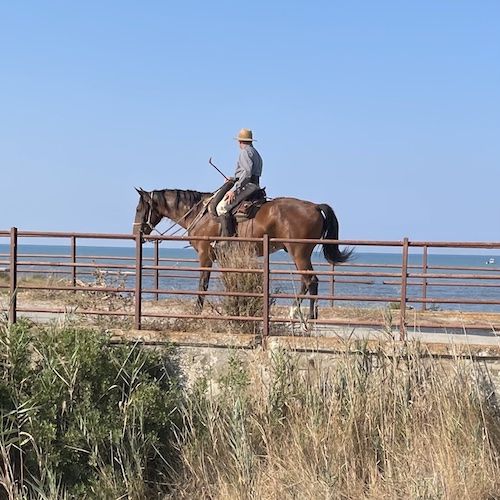
💡 Did you know... Today's Butteri carry out a daily inspection ride to the different herds. As a guest in the Maremma National Park, you have the opportunity to accompany them on this ride. Picadera-Founder Fanni has already taken advantage of this opportunity as part of a trip to Tuscany - the photos in this article are from her ride.
Equipment of the Buttero and his Maremmano horse
The saddle
The Butteri use two different types of saddles for their horses. The better known is the Bardella saddle. It is usually treeless and made of suede or smooth leather. It has a wide seat and wide knee rolls so that the rider can sit in it comfortably and securely for as long as possible. The saddle is padded with horsehair. As a result, the saddle is very stiff at the beginning and needs to be "broken in". It slowly adapts to the rider and horse. The saddle is then completely customized and does not fit several riders or horses.
The second saddle model used by the Butteri is the so-called Scarfarda, a working saddle which originated from the military. Like the Bardella saddle, the Scarfarda is padded with horsehair. However, it also has a wooden saddle tree and is therefore quite heavy. The seat of both saddles is usually ribbed. Their appearance is reminiscent of Moorish or Iberian saddles. The stirrups used Stirrups are very similar to the classic English stirrups. The saddle is usually combined with breastplate and crupper.
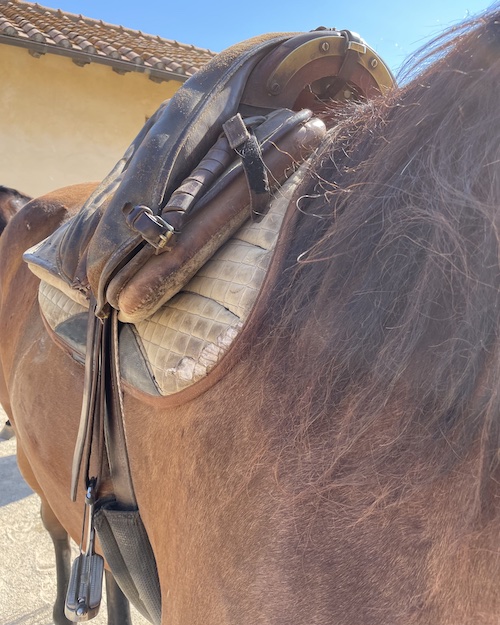
The bridle and the Curb Bit
The bridle used by the Butteri is quite simple and traditional. It is ridden with a Curb Bit. The reins used are open at the ends, similar to those used in Western riding. Under the bridle, the Maremma horse wears a typical halter made of sisal with an integrated horse lead rope, the "Cavezza maremmana". This is used to lead and tether the horse. The halter is also used to break in young horses.
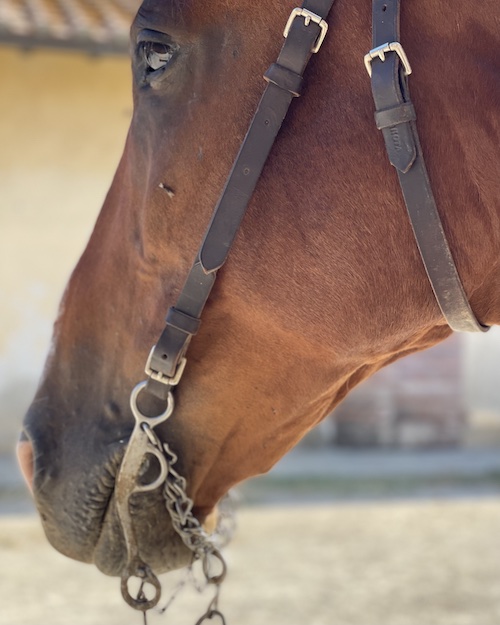
The lasso
Like the halter, the lasso is also made of soft sisal. It is attached to the front of the saddle and is used to catch the cattle.
The driving stick
The most important accessory of the buttero is the uncino, an approx. 1.5 m long wooden stick with a hook at one end and a kind of fork at the other. To guarantee durability, the uncino is carved from cornelian cherry wood. With the help of the unico, the buttero can pick up ropes from a horse, drive cattle or open and close gates. The unico is also known as the buttero's third hand.
The clothes
The buttero's clothing, also known as divisa, consists of a jacket or gilet with corduroy pants. Underneath, he usually wears a light-colored or light-checked shirt. This is combined with a tie and a wide-brimmed hat. Over the jacket or gillet, the buttero wears a long leather coat, similar to a riding coat, which protects him from the wet and cold. The clothing is usually chosen in the colors olive green, brown and beige or grey-brown. spurs are also worn, they are usually small and have an inconspicuous shape.
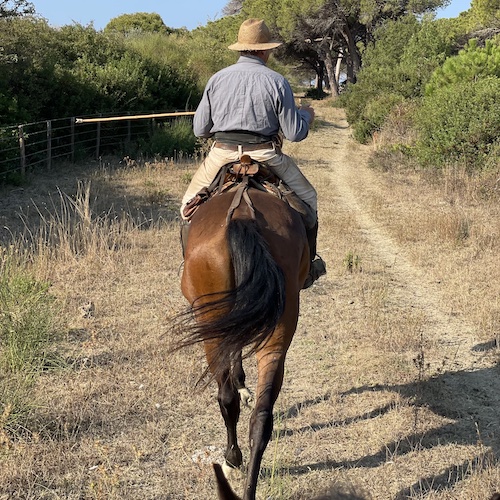
💡 Did you know... The Butteri never actually use the Stirrups for mounting. The reason for this is to protect the horse's back, as they have to mount and dismount very often during their daily work. Instead, they use a wall, a tree trunk or whatever else they can find to help them mount.
The roots of the Working Equitation
The typical buttero, his horse and his riding style have hardly changed over the last hundred years. If you would like to get to know the old typical working riding style and are a fan of Working Equitation , you should definitely pay a visit to the butteri in the Maremma on a trip to Italy. You might even have the opportunity to get into the saddle of a famous Maremmano horse.
Tips from the Picadera community
